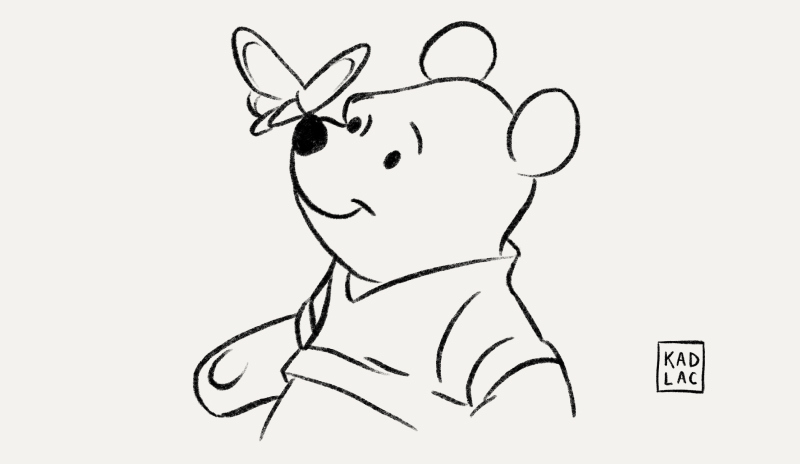Things to Draw When You’re Bored
Boredom can strike at the most unexpected moments, leaving us yearning for a creative outlet to pass the time. Whether you’re waiting in a long line, sitting through a dull meeting, or simply finding yourself with some free time on your hands, having a repertoire of drawing ideas can be a lifesaver. In this comprehensive 5,000-word article, we’ll explore a wide range of engaging and fun things to draw when you’re bored, along with a helpful FAQ section to guide you through the process.
The Benefits of Drawing When Bored
Drawing can be a powerful tool for combating boredom and unlocking your creative potential. When you find yourself with time to spare, picking up a pen and paper (or your digital drawing device) can provide a range of benefits:Stress Relief: The act of drawing can have a calming and meditative effect, helping to reduce stress and anxiety. The focused attention required can help you enter a state of flow, allowing you to momentarily escape the boredom and disconnect from any worries or distractions.
Improved Concentration: Drawing requires a certain level of focus and attention to detail, which can help improve your concentration skills. This can be particularly beneficial in situations where you need to remain attentive, such as during a long lecture or a tedious work task.
Skill Development: Consistent drawing practice can lead to the development of valuable artistic skills, such as hand-eye coordination, observation, and problem-solving. Even if you consider yourself a beginner, regular drawing can help you improve and hone your abilities over time.
Creativity Boost: Engaging in drawing can stimulate your creative thinking and problem-solving abilities. The act of creating something from scratch can inspire new ideas and help you approach challenges from a fresh perspective.
Mood Enhancement: The sense of accomplishment and satisfaction that comes from creating a drawing can have a positive impact on your mood and overall well-being. The act of drawing can be a source of joy and self-expression.
Things to Draw When You’re Bored
When it comes to drawing during moments of boredom, the possibilities are endless. Here are some engaging and fun ideas to get you started:
1. Doodles and Patterns
Doodling is a simple and accessible way to pass the time. Start with basic shapes, such as circles, squares, or triangles, and experiment with different patterns and designs. You can also try your hand at more intricate patterns, such as mandalas or zentangles, which can be both relaxing and visually appealing.
2. Portraits and Caricatures
Capturing the likeness of people around you can be a fun and challenging drawing exercise. Try sketching the faces of your friends, family members, or even strangers you observe in your surroundings. You can also experiment with caricatures, exaggerating certain features for a humorous effect.
3. Animals and Creatures
The animal kingdom offers a vast array of subjects to draw. From domestic pets to wild animals, you can explore different shapes, textures, and expressions. You can also let your imagination run wild and create your own fantastical creatures, such as dragons, unicorns, or mythical beasts.
4. Landscapes and Cityscapes
Whether you’re looking out a window or recalling a favorite place, drawing landscapes and cityscapes can be a rewarding challenge. Pay attention to the shapes, proportions, and details of buildings, trees, and other elements, and experiment with different perspectives and compositions.
5. Still Life Compositions
Surrounding yourself with everyday objects can provide a wealth of drawing inspiration. Arrange a simple still life setup, such as a collection of fruits, flowers, or household items, and capture their shapes, textures, and shadows on paper.
6. Lettering and Typography
Explore the art of lettering and typography by creating unique designs with words, phrases, or even your own handwriting. Experiment with different font styles, layouts, and decorative elements to add visual interest to your drawings.
7. Imaginary Scenes and Narratives
Unleash your creativity by drawing imaginary scenes, stories, or narratives. You can create fantastical landscapes, whimsical characters, or surreal compositions that transport you to a different world.
8. Observational Drawings
Take a closer look at your surroundings and draw what you see. This could be anything from the objects on your desk to the people in a crowded room. Focusing on the details and nuances of your observations can be a rewarding drawing exercise.
9. Architectural Sketches
Whether you’re in a bustling city or a quiet rural setting, the built environment can provide endless inspiration for architectural sketches. Capture the lines, shapes, and structures of buildings, bridges, or other architectural features.
10. Expressive Drawings
Use drawing as a means of self-expression and emotional exploration. Experiment with abstract shapes, colors, and lines to convey your mood, feelings, or inner thoughts. This can be a therapeutic and cathartic drawing experience.Remember, the key to enjoying drawing when you’re bored is to experiment, have fun, and not worry about the end result. Embrace the process and allow your creativity to flow freely.
Frequently Asked Questions
Q: I’m a complete beginner. Where should I start with drawing?
A: No problem! Even if you have little to no drawing experience, there are plenty of accessible starting points. Begin with simple shapes, such as circles, squares, and triangles, and practice sketching them. You can also try copying basic objects or doodles to get a feel for the process. Don’t worry about creating masterpieces right away – focus on enjoying the act of drawing and building your confidence.
Q: What materials do I need to start drawing?
A: The great thing about drawing is that you don’t need a lot of specialized equipment. At a minimum, you’ll need a pencil or pen and some paper. However, you can also experiment with different drawing tools, such as colored pencils, markers, or even digital drawing apps on your smartphone or tablet. The key is to find materials that you feel comfortable using and that allow you to explore your creativity.
Q: How can I improve my drawing skills?
A: Consistent practice is the key to improving your drawing skills. Set aside regular time, even if it’s just a few minutes a day, to work on your drawings. Try to challenge yourself by attempting new subjects or techniques. You can also seek out tutorials, online classes, or art books to learn new skills and gain inspiration. Remember, the more you draw, the more your abilities will develop over time.
Q: Is it necessary to have artistic talent to enjoy drawing?
A: Absolutely not! Drawing is a skill that can be learned and developed, regardless of your natural artistic talent. The most important thing is to approach it with an open mind and a willingness to experiment. Don’t be discouraged if your early drawings don’t meet your expectations – focus on the process and the joy of creating, and your skills will improve with practice.
Q: Can I share my drawings with others?
A: Sharing your drawings can be a rewarding and motivating experience. Consider sharing your creations with friends, family, or online communities dedicated to art and creativity. You can also use social media platforms to showcase your work and connect with other artists. Receiving feedback and encouragement can be a great way to stay inspired and continue developing your drawing skills.
Q: What if I get stuck or feel uninspired?
A: It’s natural to experience moments of creative block or lack of inspiration. When this happens, try changing your environment, exploring new drawing techniques, or seeking out inspiration from other artists or sources. You can also try drawing from reference images or engage in collaborative drawing exercises with friends. Remember, the key is to keep an open and playful mindset, and not to get too caught up in the end result.
Q: Can drawing help with mental health and well-being?
A: Yes, drawing and other creative activities can have a positive impact on mental health and well-being. The act of drawing can be a form of mindfulness, helping to reduce stress and anxiety, improve focus and concentration, and boost mood and self-expression. Engaging in drawing can also provide a sense of accomplishment and personal growth, which can contribute to overall well-being.
Relevant Information in Table Format
| Statistic | Value | Source |
|---|---|---|
| Percentage of Adults Who Engage in Drawing or Other Visual Arts as a Hobby | 23% | National Endowment for the Arts |
| Average Time Spent on Drawing or Visual Arts per Week by Hobbyists | 2.5 hours | National Endowment for the Arts |
| Percentage of Adults Who Report Drawing or Sketching as a Stress-Relieving Activity | 34% | American Psychological Association |
| Percentage of Adults Who Report Improved Mood After Engaging in Drawing or Visual Arts | 45% | American Art Therapy Association |
| Percentage of Adults Who Report Improved Focus and Concentration After Drawing | 52% | Journal of the American Art Therapy Association |



